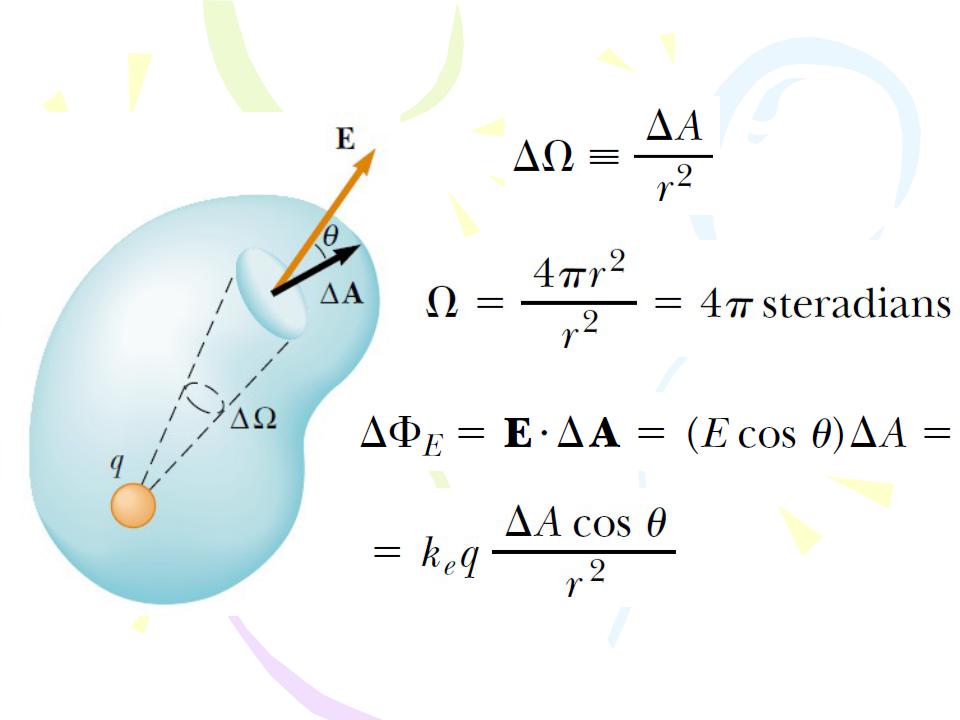
- •Quick Quiz 10.1
- •Quick Quiz 10.2
- •Quick Quiz 10.3
- •Quick Quiz 10.4
- •Course of lectures «Contemporary Physics: Part1»
- •Properties of Electric Charges
- •Properties of Electric Charges
- •Charging Objects By Induction
- •Charging Objects By Induction
- •Charging Objects By Induction
- •Coulomb’s Law
- •Coulomb’s Law
- •Coulomb’s Law
- •Coulomb’s Law
- •The Electric Field
- •The Electric Field
- •The Electric Field
- •Electric Field of a Continuous
- •Electric Field of a Continuous
- •Electric Field Lines
- •Electric Field Lines
- •Electric Field Lines
- •Electric Field Lines
- •Motion of Charged Particles in a Uniform
- •Motion of Charged Particles in a Uniform The Cathode Ray TubeElectric Field
- •Electric Flux
- •Electric Flux
- •Electric Flux
- •Electric Flux
- •Electric Flux
- •Gauss’s Law
- •Gauss’s Law
- •Gauss’s Law
- •Gauss’s Law
- •Application of Gauss’s Law to Various Charge Distributions
- •Conductors in Electrostatic Equilibrium
- •Conductors in Electrostatic Equilibrium
- •Conductors in Electrostatic Equilibrium
- •FormalDerivation of Gauss’s Law
- •FormalDerivation of Gauss’s Law
- •Quick Quiz 12.1
- •Quick Quiz 12.2
- •Quick Quiz 12.3
- •Quick Quiz 12.4

Gauss’s Law
(11.18)

Gauss’s Law
The net flux through any closed surface surrounding a point charge q is given by q/ε0
and is independent of the shape of that surface.

Gauss’s Law
The number of electric field lines entering the surface equals the number leaving the surface. Therefore, we conclude that the net electric flux through a closed surface that surrounds no charge is zero.

Gauss’s Law
Let us extend these arguments to two generalized cases: (1) that of many point charges and (2) that of a continuous distribution of charge. We once again use the superposition principle, which states that the electric field due to many charges is the vector sum of the electric fields produced by the individual charges. Therefore, we can express the flux through any closed surface as
Gauss’s law, which is a generalization of what we have just described, states that the net flux through any closed surface is
(11.19) 


Application of Gauss’s Law to Various  Charge Distributions
Charge Distributions
In choosing the surface, we should always take advantage of the symmetry of the charge distribution so that we can remove E from the integral and solve for it. The goal in this type of calculation is to determine a surface that satisfies one or more of the following conditions:
1. The value of the electric field can be argued by symmetry to be constant over the surface. 
2.The dot product in Equation 11.19 can be expressed as a simple algebraic product E dA because E and dA are parallel.
3.The dot product in Equation 11.19 is zero because E and dA are perpendicular.
4.The field can be argued to be zero over the surface.

Conductors in Electrostatic Equilibrium
When there is no net motion of charge within a conductor, the conductor is in electrostatic equilibrium. A conductor in electrostatic equilibrium has the following properties:
1.The electric field is zero everywhere inside the conductor.
2.If an isolated conductor carries a charge, the charge resides on its surface.
3.The electric field just outside a charged conductor is perpendicular to the surface of the conductor and has a magnitude σ/ε0, where σ is the surface charge density at
that point.
4. On an irregularly shaped conductor, the surface charge density is greatest at locations where the radius of curvature of the surface is smallest.

Conductors in Electrostatic Equilibrium
Any net charge on the conductor must reside on its surface

Conductors in Electrostatic Equilibrium
(11.20)

Formal Derivation of Gauss’s Law
Derivation of Gauss’s Law


 Derivation of Gauss’s Law
Derivation of Gauss’s Law